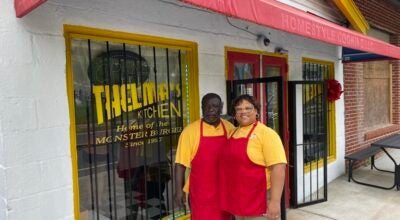Lessons learned pay off for state
Published 10:24 pm Tuesday, September 2, 2008
MONTGOMERY – The first major test of Alabama’s post-Katrina hurricane plans went well, even though the state’s shelters had to accommodate more than twice as many evacuees from Hurricane Gustav compared with the storm three years ago.
Mandatory evacuations in some coastal areas and the first-ever use of shelters at Alabama’s community colleges pushed the state to a new level of hurricane relief.
“It worked this time the way it should work,” Gov. Bob Riley said Tuesday while visiting a shelter at a Montgomery church.
Alabama got through Gustav much better than Katrina partly because the hurricane landed farther west. There were no reported fatalities, no permanent damage to major roads, and a much smaller number of power outages than with Katrina. Most of the coastal schools closed Tuesday due to the storm are scheduled to reopen Wednesday.
Life was much different three years ago when Katrina became the nation’s most destructive hurricane.
After Katrina, Alabama officials began a review of the state’s emergency preparedness plans, covering everything from early warnings to sheltering evacuees.
With Gustav, Riley issued evacuation orders for flood-prone areas of the Alabama coast, and a mandatory evacuation in the New Orleans area sent a steady stream of traffic to higher ground in Alabama.
At the height of the storm, about 11,000 evacuees were housed in 53 shelters throughout Alabama, spokesman Chris Osborne said.
That’s more than double the 5,400 after Katrina.
Riley said the state had made preparations for about 8,000, but responded to the increased demand by opening more shelters.
“It’s up to us to take care of them, and we are going to,” he said.
The number of evacuees in motels and hotels far exceeded those in shelters. Alabama Tourism Director Lee Sentell said nearly 150,000 evacuees were in Alabama motels and hotels Sunday night.
Based on a review of about 20 percent of the state’s motels and hotels, Sentell said the number appeared to drop to about 132,000 on Tuesday night.
He said Alabama has 65,000 guest rooms, but many evacuees are staying three or four to a room.
After Katrina, the Federal Emergency Management Agency estimated that 20,000 evacuees were in Alabama hotels and motels.
At a Red Cross shelter in Vaughn Park Church of Christ, Brenda Brown, a gas station cashier from New Orleans, said this evacuation went much smoother than her evacuation to Houston after Katrina.
“It’s lovely here. They are treating us so well — three full courses every day. They will give you what you need,” she said.
But she said she was anxious for electric, water and sewer service to get restored in New Orleans so she can go home.
Not all were happy with their shelter experience.
“I hate this,” said Chad Dykes, 26, of Livingston, La., who said he wished he had stayed home rather than go to the Birmingham-Jefferson Convention Center. “I don’t like being here. I can’t sleep. I have no privacy.”
Others at Montgomery shelters said they fled New Orleans with nothing more than clothes and spare change. With no disaster declaration for New Orleans, that means no government financial aid to help them get home like they had with Katrina.
“I haven’t got money to get back. Many families came out with their last money,” said Vernell “Nicky” Jefferson, who works for a steel company in New Orleans.
The governor said his staff was in touch with the Federal Emergency Management Agency and was hopeful some assistance — either through the government or charitable groups — would be coming.
At Birmingham, Curtis Helms, 47, said he left the Third Ward in New Orleans in such a hurry to get a bus late Saturday that he had only $20 in his pocket and a T-shirt and denim shorts he was wearing Tuesday. He said he wishes the Red Cross provided clothing.
“Right now I’d rather be home, even with no electricity,” Helms said.
Alabama was able to house a record number of evacuees in shelters for Gustav because state officials decided during their post-Katrina review that traditional shelters in churches, community centers and government buildings weren’t enough for a major storm. They began working on plans to use the state’s community colleges as Red Cross-certified shelters.
The colleges opened their gyms and classrooms for the first time as Gustav approached the Gulf Coast, and they got plenty of use from the bus evacuation system that New Orleans began after Katrina.
Community college Chancellor Bradley Byrne had nothing but praise for 1,000 employees who took care of 6,500 evacuees, mostly from New Orleans.
“Our people have not run shelters before, but they have done a beautiful job,” he said in an interview Tuesday.
Byrne said the colleges had to make some adjustments. For instance, the schools weren’t supposed to get any evacuees with medical needs or other special needs, but they did. In those cases, medical personnel in the local communities stepped in to help, Byrne said.
Four schools — Shelton State, Wallace-Hanceville, Bevill State and Snead State — had to cancel classes Tuesday due to the large number of evacuees, but planned to reopen Wednesday or Thursday.
During Katrina, Alabama Power got its operations center in downtown Mobile flooded when storm waters swept through the heart of the port city.
Since then, Alabama Power has moved its operations center to higher ground about 10 miles west of Mobile and built it to survive a Category 5 hurricane.
The new center came through Gustav fine, company spokesman Bernie Fogarty said.
At the peak of Gustav, Alabama Power had more than 4,500 customers out of power along the coast, with about 2,000 of those on Dauphin Island, where the transmission line from the mainland got knocked out. But repair crews headed out during the rain on Monday and everything was back to normal by Tuesday afternoon.
“For us, it was a good test run because it’s been a couple of years since we had a major storm bearing down on us,” company spokesman Michael Sznajderman said Tuesday.
Because of the light damage in Alabama, the power company dispatched more than 1,000 employees and contract workers to Mississippi and Louisiana to help.
Employees of the state Department of Transportation were on standby Saturday and Sunday to switch Interstate 65 to one way headed north from Mobile to Montgomery, but they never had to make the switch.
Department spokesman Tony Harris said traffic on I-65 became heavy but it stayed within the designed capacity because evacuees started leaving the Gulf Coast early and they had two routes — I-65 in Alabama and I-59 in Mississippi and Alabama — to head north.
The last one-way traffic on I-65 occurred in 2005 during Hurricane Dennis.






